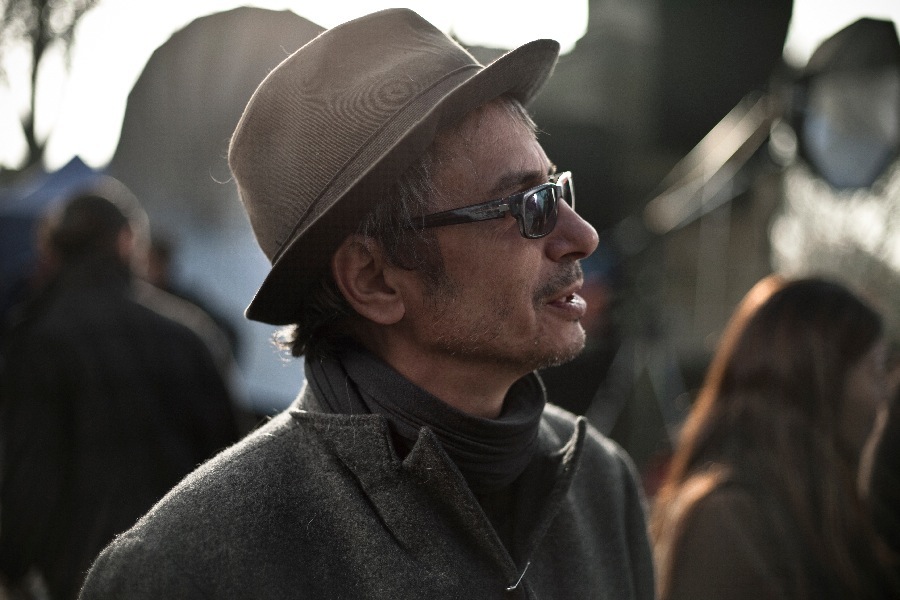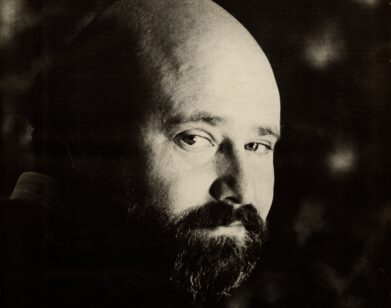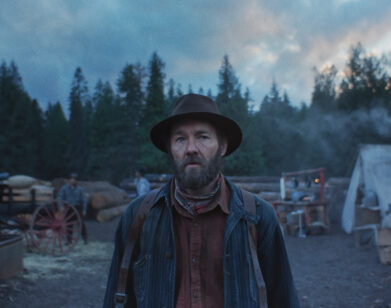Léos Carax, Motorized

ABOVE: LÉOS CARAX
At the start of his career, critics labeled Léos Carax a latter-day Rimbaud and an enfant terrible; and while the 51-year-old French filmmaker has transitioned into middle age, it’s clear that Carax continues to play by his own rules. Celebrated in his twenties as a cinematic wunderkind with the release of Boy Meets Girl, Mauvais Sang, and The Lovers on the Bridge, the filmmaker has had a sporadic but potent career of moviemaking, crafting films about love, madness, and artistic engagement. His last feature film, the incest drama Pola X, was released in 1999, and save for a few short film projects and a segment in Tokyo! (2008) along with Michel Gondry and Joon-ho Bong, Holy Motors is Carax’s first major work in over a decade.
“My films start with images, a few images and a few feelings, and I try to edit them together to see the correspondence between these images and these feelings,” Carax said in a recent roundtable interview. Set in a surreal alterna-universe, Holy Motors is an electric, frenetic, careening film that invokes the history of cinema and defies genre categorization. In a curious science fiction amalgam of film noir, romance, crime thriller, and musical, we follow Monsieur Oscar (a fantastic, shape-shifting Denis Lavant) as he is ferried around Paris in a limousine by his loyal chauffeur, Céline (played with an understated icy brilliance by Édith Scob). We learn M. Oscar has nine appointments to attend throughout the day, and the back of the limo takes on the feeling of an old-timey backstage dressing room, with boxes of props, disguises, and a lit vanity mirror. Céline equips M. Oscar with a dossier on each appointment, and throughout the day he becomes, among other characters, a gypsy begging for change, an assassin, a devoted father, a sewer-dwelling leprechaun, and an elderly man on his deathbed. Throughout the course of his day, M. Oscar comes into contact with a former lover (played by Kylie Minogue) and a fashion model and photographer’s assistant (Eva Mendes and Anabelle Dexter-Jones, respectively). Carax purposefully structured the film to flout narrative norms, abandoning the use of flashbacks or extended periods of time to contain the film into a day in the life of M. Oscar.
What Oscar is achieving, and whom Oscar is performing for, remains unanswered. The only interjection from the outside world is in the form of Oscar’s boss, The Man With the Birthmark, played by French cinema legend, Michel Piccoli, who advises Oscar on his performances thus far. “I invented a science fiction world that would make it possible to see, I hope, the whole experience of being alive today,” Carax said. “The film was not born out of the idea of trying to talk about history or film genre. I used cinema as language to create this science fiction world. Hopefully the film is not about cinema.”
It seems that Carax is a filmmaker who finds the critic’s eye to be troubling. He eschewed all interviews at Cannes and finds the process to be uncomfortable. In person, he finds comfort behind a pair of dark-tinted sunglasses. But despite Carax’s somewhat simplistic explanation of Holy Motors‘ thematic origins, the film is rife with allusions to the medium itself—it’s a bit like cinematic “I Spy.” Bookended by Étienne-Jules Marey’s locomotion studies and featuring an accordion scored Entr’acte, the film begins with a prologue—Carax himself awakening in a hotel room. He finds a hidden door in his wall; an underground passage leads to a movie theater, where the seats are packed with listless viewers. Whether they are sleeping, or dead, is unclear, but the scene establishes a commentary on the position of the contemporary audience. The tropes that surface in the various appointments—a Chaplin-sque motion-capture sequence, Minogue’s character Jean, with a cropped Seberg haircut circa Breathless, Scob donning a mask reminiscent of her early role in Georges Franju’s Eyes Without a Face—point to an acute awareness, and adoration, of cinema past and present.
M. Oscar, contained behind tinted windows in a limousine, embodies the spirit of an actor, and the act of performance. Carax utilizes this idea to convey the adaptability and transformation required by individuals in reality. “I’m not especially interested in actors or their life, double, triple identities and all that. We deal with these themes in real life,” Carax explained. “The cinema story starts with the human body, or an action. We always have, and we still love to watch human bodies in action. We also love to watch landscapes or things we have created, buildings or cigarettes, guns and cars… but above all, we love to watch human bodies, whether they’re walking, running, fucking, or anything.”
HOLY MOTORS IS OUT IN LIMITED RELEASE TODAY, AND WILL BE RELEASED NATIONALLY NOVEMBER 9.






